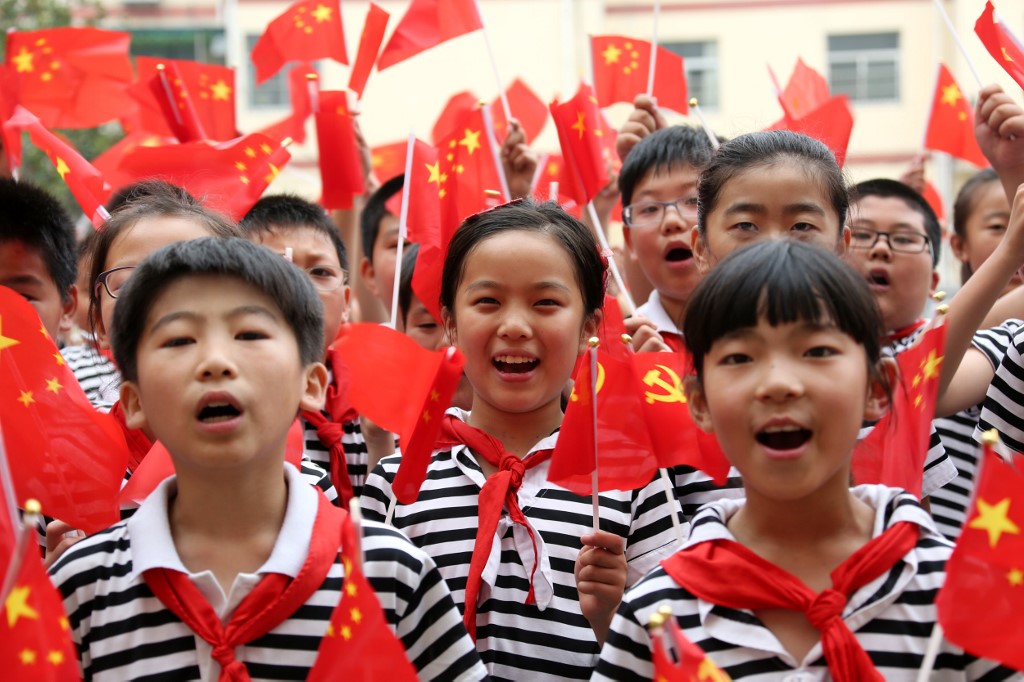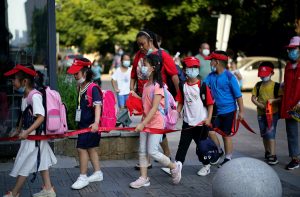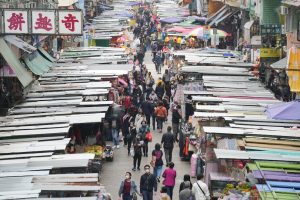(ATF) Following China’s long-term policy to allow only one child per family, the government has been trialling a ‘three-child policy’ in the North – to combat the problem of low birth rates and a massive 300 billion people entering retirement.
“From a researcher’s point of view, the national policy of ‘three children’ must be liberalised,” Chen Hao, deputy director of the Research Bureau of the People’s Bank of China, told a reporter from China Business Journal.
The region in Heilongjiang was selected to trial the three-child policy, as the area has been the focus of attention after suffering successive declines in its birth rate and natural growth rate after the three-child policy was introduced. The area is referred to as China’s ‘rust belt.’
Read more: Carrie Lam’s cash stash and the future of the dollar
“This is because of the population’s inertia with China seeing fewer births,” Chen Hao explained.
Recently, Ren Zeping, of Evergrande Research Institute, proposed full liberalisation to encourage more people to have children “as soon as possible”. Given that Evergrande is the country’s second largest house builder, they have their own perspective on how to respond to this dilemma.
Sadly, the research has found bids to stimulate fertility were not obvious even after the ‘three births’ policy was launched.
In 2016, officials in Heilongjiang voted to amend regulations on population and family planning in the province. These state that in addition to ethnic minorities and ‘special’ families, populations in border cities can also have three children.
Four years have passed, and relevant data show that the new policy has been a dismal failure, and officials were “not optimistic”.
At the end of 2016, the total population of Heihe city was 1.628 million – 998,000 in urban areas and 630,000 in rural areas, according to the Public Security Department’s statistics. People in Heihe had a birth rate of 5.4%, a death rate of 5.8%, and a natural population growth rate of -0.4%.
But three years later, the population had seen a pronounced decline. In 2019, the total population of Heihe had dropped to 1.581 million – 929,000 in urban areas and 652,000 in rural areas. People in city had a birth rate of 3.9%, a death rate of 5.3%, and a natural population growth rate of -1.4%.
The urban population had dropped by about 70,000 over the past three years.
The “three-child” policy was not enough to restore the population decline, Chen Hao said, who described the situation as “population inertia.”
He said: “It is necessary to realise the huge force of population inertia. After the population transition, the rate of population decline will exceed our imagination.”
And he said: “It is necessary to realise that although population is a slow variable, it has the characteristics of accelerating development and is difficult to recover.”
Lack of incentives
Local residents in Heihe’s Aihui District, who included teachers and workers employed at state-owned enterprises, all said that there was no policy to encourage women at their workplaces to have three children.
And, there were no unions or other organisations to “mobilise the three-child policy.
“Among the people I know, there are no third births, even second births are particularly rare,” a teacher at a university in Heihe told the paper. “There are some migrants, who are not local residents, and occasionally they have third births.”
The high cost of raising a child is a key factor that prevents locals from having three children. A female employee at a local telecommunications company said that “local housing prices are the same as the provincial capital Harbin, but the income of local employees is lower than Harbin.”
China’s infamous one-child policy ended in 2015.
In contrast, Russia, which is separated from China by the Heihe River, encourages childbirth and provides subsidies for families.
Under the Russian policy, which started this year (2020), the first two children of each family will receive subsidies for 18 months to three years. Each family will receive 430,000 rubles from the Russian government for a child within three years (that is about 38,000 yuan or US$5,812), and nearly 80,000 yuan ($12,237) in subsidies.
Heihe, on the opposite bank of the Russian border, has a per-capita disposable income of 29,970 yuan ($4,584) for permanent residents in its towns in 2019.
Russia also provided additional monthly subsidies to families with three or more children – the annual tax rate for mortgage loans for citizens with children is only 6%, and infertile parents can be reimbursed through basic medical insurance if they have a child via IVF (in-vitro pregnancy).
Ageing population
Chen Hao said: “We [in China] have over-estimated the ability of human beings to cope with ageing and declining birthrates.”
“My country’s demographic transition is different from that of developed countries. It has the characteristics of faster demographic transition and more serious ageing.”
Finally, he realised they needed to have a fertility-oriented policy, supplemented by pension, which emphasised savings and investment, and promoted pension reform.
“The demographic dividend disappears and the potential growth rate of China’s economy declines.”
Ren Zeping estimated that the proportion of working-age people peaked in 2010 and said it was expected to 23% less in 2050 than it was in 2019.
China’s economic growth rate was 10.6% in 2010 but dropped to 6.1% in 2018 and is about to enter an era of about 5% growth. Ageing increases consumption and reduces savings and investment, which leads to a decline in the potential economic growth rate and triggers changes in the consumer structure. For example, the proportion of medical care people require gradually increases.
Ren Zeping suggested the country should fully liberalise and encourage childbirth as soon as possible – let families have childbearing rights and autonomy – and speed up the establishment of a system to support them.
There are also objections to the link between fertility and people ageing.
Jia Yunzhu, director of the Beijing Cooperation Institute of Population and Social Development, said that the ageing of the population is an inevitable development of human society and the result of human pursuit of health and longevity and the fight against various diseases.
The problem of population ageing is a problem of human social development, he said. “It cannot be solved by a single policy.”






















